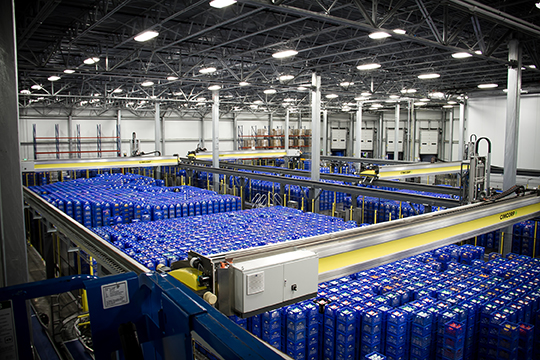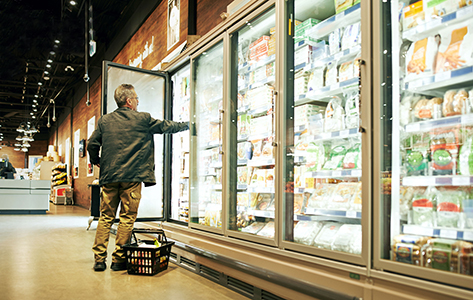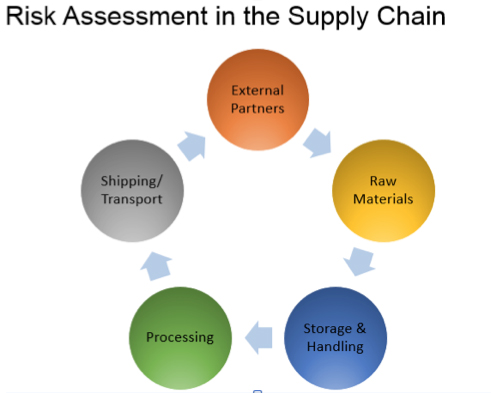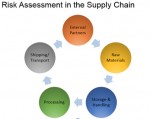Consumer safety is of paramount importance and product recalls are a necessary means to this end. Product recalls are a serious, complex, and costly issue affecting the food and beverage industry in the United States. The FDA estimates that there are around 48 million cases of foodborne illness each year—causing one in six Americans to get sick from contaminated food. In addition to affecting public health, recalls have a dramatic effect on manufacturers by creating economic problems, damaging a company’s reputation, and imposing potential legal penalties and liabilities. In the search for a business management solution to better prepare themselves for and reduce the risk of recalls in their operations, many food manufacturers have discovered that technology, specifically ERP software, is key to lowering the risk of food and beverage product recalls.
An industry-specific ERP solution is a centralized business system with key industry features providing a system of record-keeping, with the tools to support the preparation and reduction of recall risks. While a manufacturer is ultimately responsible for a product recall, an ERP solution is essential in supporting and championing overall recall readiness and reduction. With the streamlined and automated inventory, manufacturing, and quality control processes managed within the software, critical steps and data that assist in recall mitigation are documented—including supplier verification records, audit logs, receipt records, quality testing, lot tracking, and shipment logs. The key to prevention of a product recall is preparation, which can be handled efficiently through an ERP’s functionality specifically in the following areas.
Supplier Management
An ERP facilitates best practices for supplier management and risk assessment within the solution to assure the acquisition of quality raw materials from trusted vendors. Its role is to maintain an approved supplier list for each product ingredient, documenting detailed supplier information, quality control test results, and risk level to ensure in-house and customer-specific standards are met. For approved or activated suppliers, information regarding materials that can be purchased through the vendor, applicable certifications, quality control results, and other pertinent supplier information is stored within the centralized data system of the ERP. A risk assessment for each vendor is also documented to ensure that any potential inherent risk(s) from vendor-issued recalls and to finished goods are limited.
In addition to activated suppliers, an ERP solution also assigns and manages qualified alternates to provide vetted selections should a primary supplier’s materials become unavailable. This positions a company well in the supply chain, as the investigative work has already been conducted on other suppliers, limiting the need and risk associated with onboarding an unknown supplier in a moment of crisis. Vendors are recorded within the system and ranked in order of preference and/or risk level so that they can be identified and put into use quickly if a supplier becomes unavailable—providing the preparation and leverage that companies need to mitigate the risk to safety in the supply chain. In a product recall situation, when a supplier notifies a customer of a contaminated ingredient, the supplier management feature within the ERP solution provides for a qualified replacement vendor that can fulfill the needed raw material quickly and efficiently.
Inventory Control
An ERP system offers end-to-end traceability, maintaining a comprehensive record that tracks raw ingredients, work-in-progress, and final products throughout the supply chain using barcode scanning to link product and lot information to batch tickets, QC testing results, shipping documents, and labels. This full forward and backward lot traceability is necessary to provide a documented audit trail imperative to locating raw materials or finished goods quickly within the initial 24-hour time period of a product recall. With full manufacturing, inventory, and reporting integrations, the ERP supports sound manufacturing practices that assist with recall preparedness – maintaining current Good Manufacturing Practices (cGMP), FDA reporting, GFSI compliance, and other industry-specific regulations to provide a documented audit trail with the ability to adapt as compliance requirements change.
Managing protocols to ensure the quality of inbound and outbound materials is essential in minimizing recall risk across the entire supply chain—from raw materials to the delivered final product. With an industry-specific ERP solution, formulas, recipes and instructions are maintained, scaled and verified to ensure consistency of products within the manufacturing process. This instills preventative measures throughout the production cycle in the form of process steps and quality control test specifications to bolster safety and quality. Quality features such as quarantine status and other status capabilities permit the isolating, removing and disposing of raw ingredients and finished goods that fail to meet quality control standards—triggering an alert to notify the purchasing department to investigate the issue. Having the ability to remove ingredients and finished goods from inventory or production prevents contaminated items from reaching store shelves and consumers, which reduces overall recall risk.
Inventory control practices are an important part of the functionality within an ERP solution that help to reduce overall recall risk. This includes managing and reporting of shelf life and expiration dates to maintain precise and lean control of inventory and reduce variances. Automated inventory transactions with the use of an ERP’s warehouse management solution (WMS) follow industry best practices and improve efficiency to ensure the accuracy of shipments, transfers, and material returns. This real-time visibility allows for the maintenance of FIFO inventory practices necessary to reduce the risk of spoilage.
One of the leading causes of contamination for food and beverage manufacturers that results in a recall event is a lack of allergen control throughout the supply chain and production process. An ERP system helps to track, manage and record the handling, storage and batch steps of raw materials from farm-to-fork. This includes stringent sanitary practices, lot tracking, raw material segregation and process controls to avoid allergen contamination or cross-contamination. Accurate product labeling is also a significant factor in reducing risk and an automated system that generates nutritional and product package labels plays a key role in a company’s recall prevention. To meet the needs of consumers and regulators, an ERP solution automates label creation to include accurate ingredient and allergen statements, nutrient analysis, expiration dates, lot and batch numbers, and regulatory specifications. The labeling history documented in the software allows products to be identified and located quickly in the event of a recall.
Reporting
Utilizing the recall functionality in the ERP solution allows companies to plan and test their recall process in advance. Performing mock recalls permits regular measurement and improvement of procedures to ensure rapid, accurate, and thorough responses by all company stakeholders in the event of a recall. A successful simulated exercise identifies 100% of recalled ingredients/products and notifies appropriate entities in a timely manner. Evaluation and documentation of mock recall exercises help expose inefficiencies, process gaps and procedural adjustments, which are designed to improve recall readiness and minimize consumer exposure to potentially dangerous contaminants.
As proof or documentation of adherence to specific processes, reporting is essential to demonstrate that these processes have been completed—without it, an integral component is missing. Across the supply chain and throughout the manufacturing process, documentation and reporting accentuate steps that have been taken to prepare and reduce recall risk. Risk-based assessments in supplier management, lot traceability reports, and mock recall reporting all provide a starting point of analysis to allow for adjustments to be made across the business. In a recall situation, the system is able to create lot tracking reports that encompass raw ingredients through shipped finished goods. These reports can be produced in minutes, rather than the hours it takes if data is stored within separate software programs.
Due to the amount of time and money that food and beverage companies invest in getting their products to market, it is imperative that preventative measures are taken in order to avoid a product recall. Forward-thinking manufacturers can help prepare for and reduce recall risks by utilizing several important features in ERP software—including supplier management, inventory control, and reporting. Using the tools at their disposal, a company can mitigate liabilities and protect their brand to turn a potential crisis into a future filled with opportunities.












